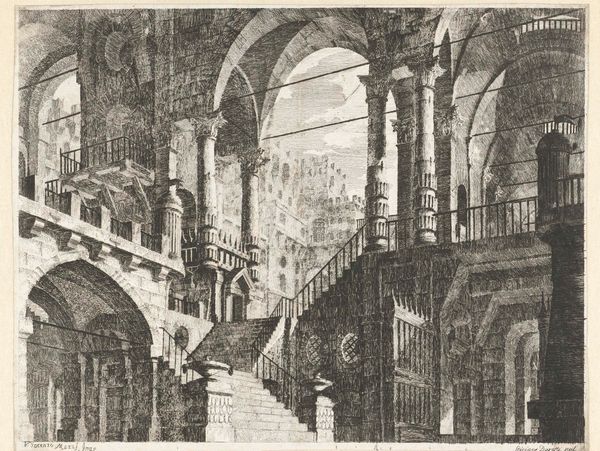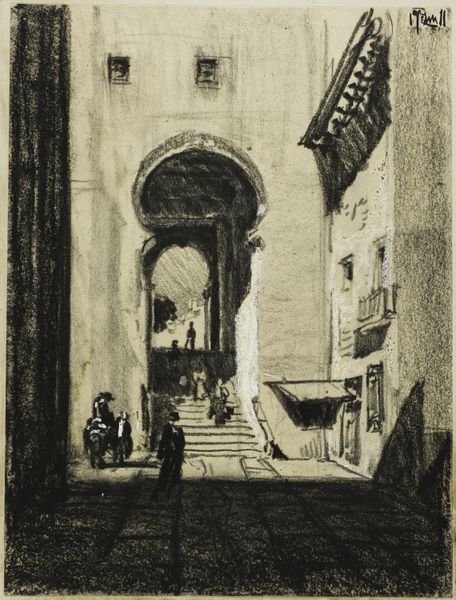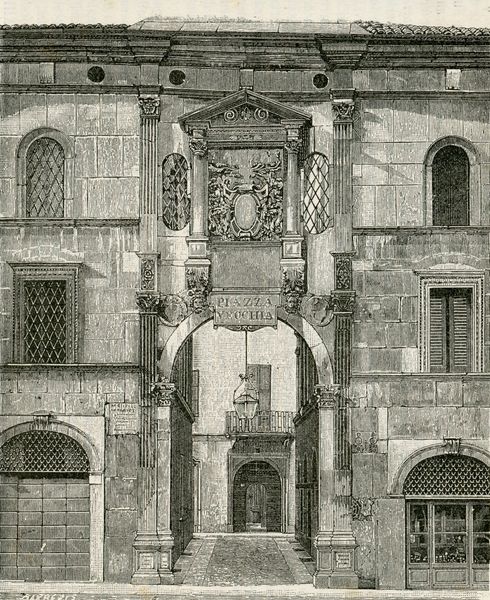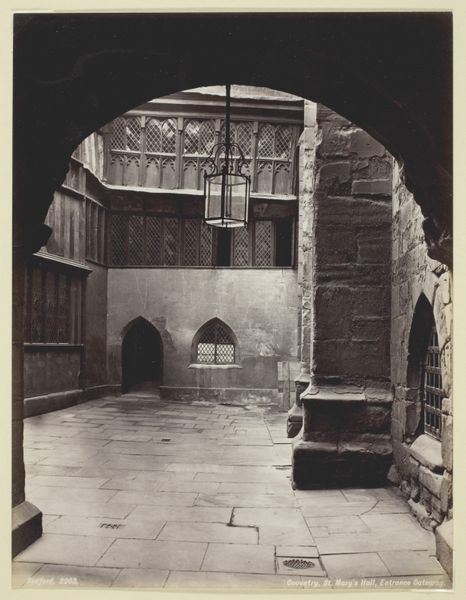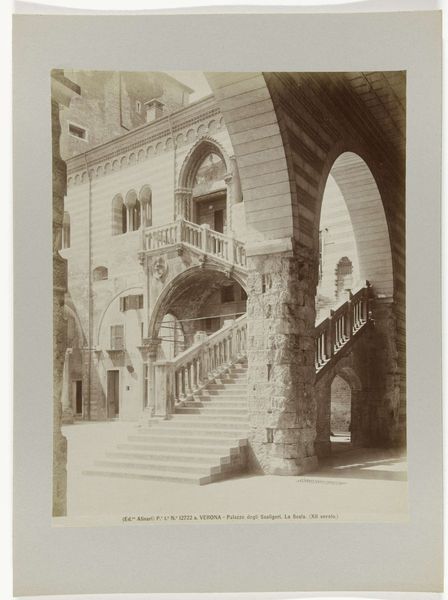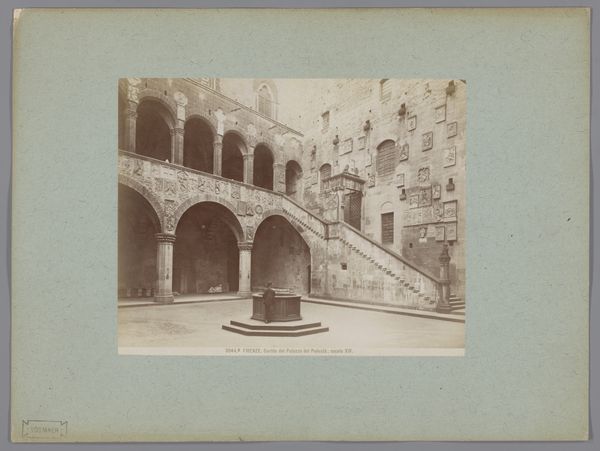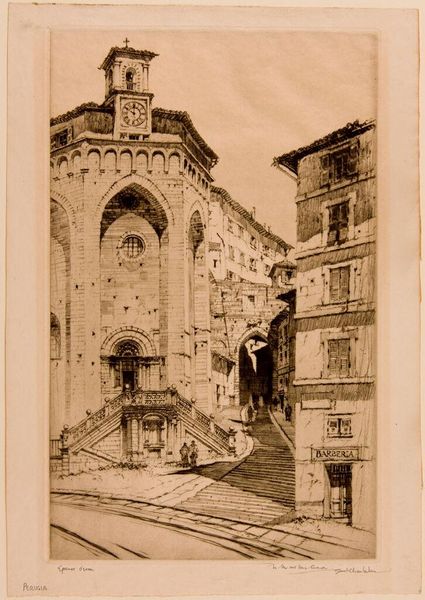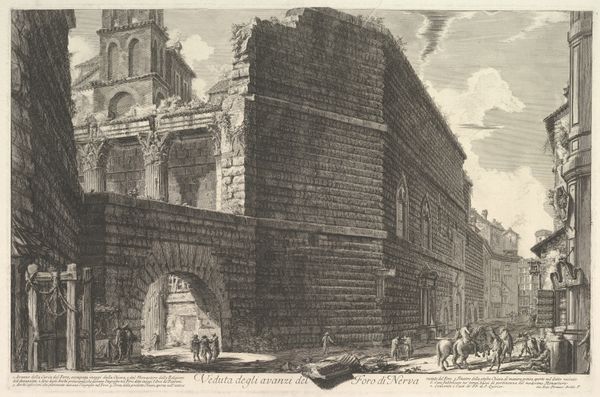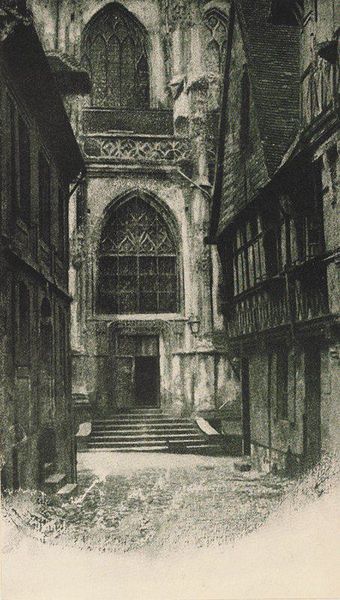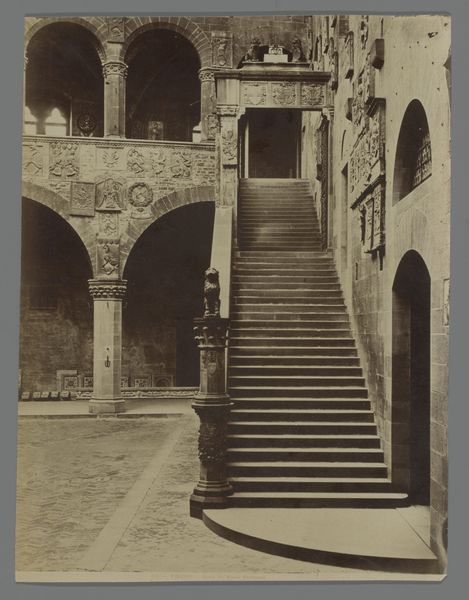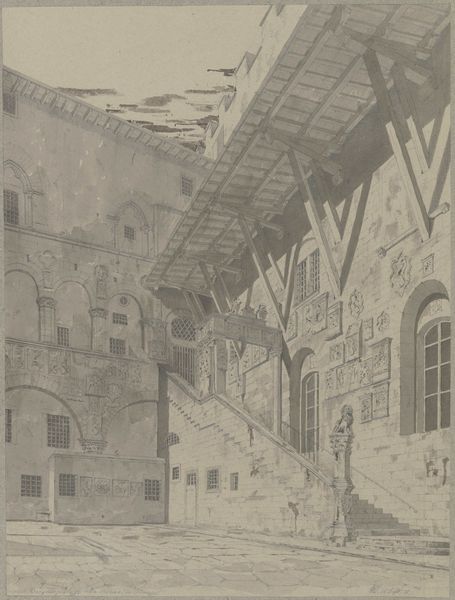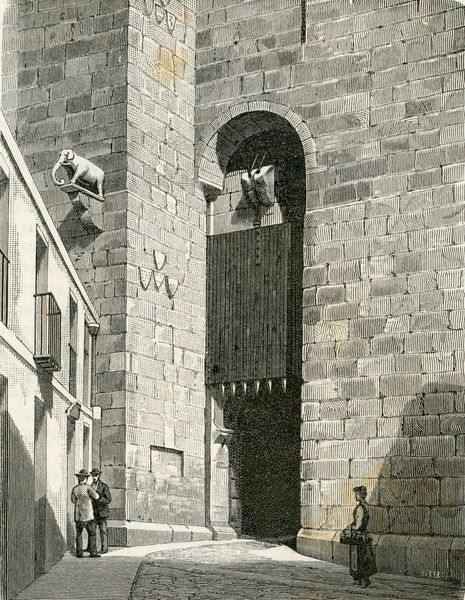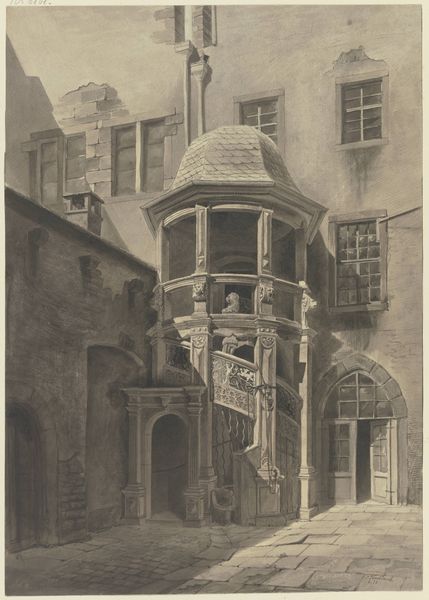
drawing, print, architecture
#
drawing
# print
#
landscape
#
historic architecture
#
brick
#
arch
#
italian-renaissance
#
architecture
#
historical building
Copyright: Public domain
Curator: What strikes me most about this drawing, "Florence. The Palazzo Del Bargello," completed in 1887 by Gustav Bauernfeind, is its somber and enclosed atmosphere. Editor: It does possess a rather dense and intricate quality, doesn’t it? Bauernfeind's dedication to detail, characteristic of late 19th-century architectural renderings, serves not only as an accurate documentation of the space, but perhaps speaks to a yearning for, or a reflection on, the Renaissance itself during a period of immense socio-political change. Curator: Exactly. The Palazzo Del Bargello, originally built in 1255, held significance as the city's chief of police headquarters, a prison, and now a national museum, accumulating rich and multifaceted layers of meaning that undoubtedly would have informed Bauernfeind’s vision. Editor: The building practically overflows with civic and political symbolism, wouldn't you agree? Think of the crenellations evoking defense, while the internal courtyard with its open staircase visually connects to power, justice and control, as figures ascend toward judgement and higher status. The effect is heightened by the stark lighting. Curator: Yes, this use of shadow seems intentional, enhancing the drama. The arches and their embellishments resonate with ideas of ceremony and perhaps hidden meanings – Bauernfeind emphasizes visual features that communicate specific functions of social control over time. It is far more than just architectural rendering. Editor: Absolutely. Consider also the cultural memory embedded within. The presence of sculptural busts and numerous, yet unidentifiable artworks evokes collections, trophies, archives of power… even a latent anxiety about preserving artifacts from the past in a rapidly modernizing world. Curator: You make an important point. The work prompts a kind of meditation on power structures, how they are materialized in stone and space, and how they are received by observers. Editor: Looking at it this way has certainly broadened my understanding beyond simply viewing it as another cityscape study of Florentine architecture. It is clear that Bauernfeind invested considerable intent and understanding into this drawing.
Comments
No comments
Be the first to comment and join the conversation on the ultimate creative platform.
